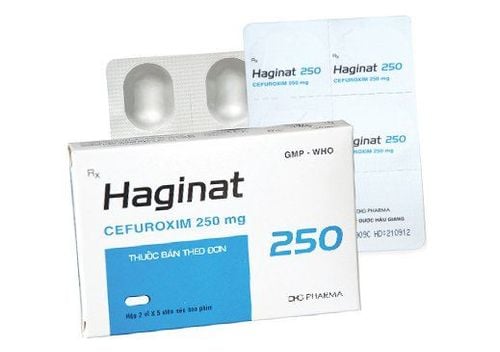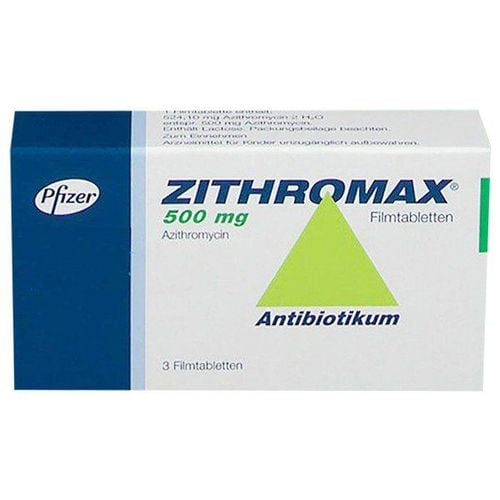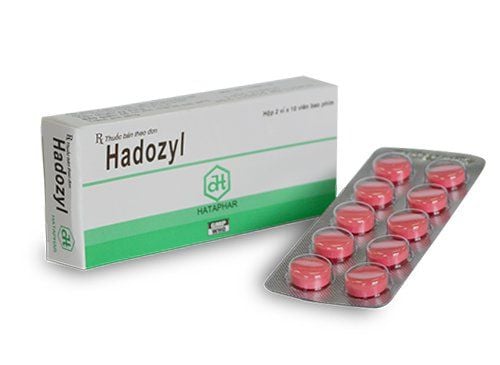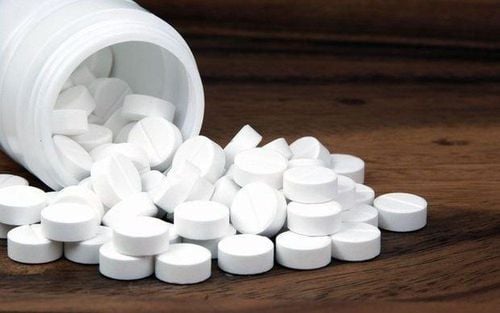This is an automatically translated article.
Bixazol drug has ingredients including Sulfamethoxazole 200mg and Trimethoprim 40mg is made in the form of oral suspension. The drug is indicated for use in the treatment of respiratory tract infections, chronic bronchitis, sinusitis, otitis media or urinary kidney or digestive tract infections. However, using Bixazol may experience some unwanted side effects such as diarrhea, red skin rash, nausea, ... Therefore, patients should learn carefully and consult a doctor before using it. use Bixazol.1. Mechanism of action of the drug Bixazol
What is Bixazol? The drug contains ingredients including Sulfamethoxazole and Trimethoprim. Sulfamethoxazole belongs to the group of synthetic pyrimidine antibiotics. Trimethoprim has a bacteriostatic effect and inhibits the bacterial enzyme dihydrofolate - reductase. These two substances often combine with each other in the ratio 1:5 = Trimethoprim : Sulfamethoxazole. This combination will produce enhanced synergistic effects that increase the effectiveness of treatment and reduce drug resistance.Sulfamethoxazol compounds structurally similar to para aminobenzoic acid compete with this component thanks to its high affinity for dihydropteroate synthetase in the first stage of bacterial folic acid synthesis. As for Trimethoprim in some cases, it is better to use it alone than in combination. For example, Trimethoprim used exclusively for acute exacerbations of chronic bronchitis has a better diffusing effect into the inflamed bronchial mucous membranes. Meanwhile, Sulfamethoxazole can only be made in the blood. Therefore, the infection cannot be reached. That shows, the treatment process of chronic bronchitis exacerbation can only use Trimethoprim compound alone.
When Sulfamethoxazole is introduced into the body it is strongly lipid soluble and has a smaller volume of distribution than Trimethoprim. When combined with Trimethoprim in the ratio above, plasma concentrations are also achieved in a ratio of 1:20 and this is also the optimal ratio for the effect of the drug. Sulfamethoxazole is well absorbed from the gastrointestinal tract. Bioavailability of the drug is high and blood concentrations are approximated by intravenous administration. The drug is widely distributed in tissues and body fluids including cerebrospinal fluid. Sulfamethoxazole is metabolised in the liver and is eliminated mainly in the urine, either as unchanged drug or as metabolites. The half-life of Sulfamethoxazole can range from 9 to 1 hour in normal subjects. However, in case of kidney failure, the time may be longer.
Trimethoprim from the gastrointestinal tract is rapidly absorbed and blood concentrations may peak after 1 to 4 hours. This component has the ability to bind to plasma proteins about 45%, respectively. Trimethoprim is widely distributed in tissues and fluids including kidney, liver, lung, bronchial fluid, saliva, aqueous humor of the eye, prostate gland and vaginal fluid in women. The drug can cross the placental barrier and may appear in breast milk.
Trimethoprim has a half-life of about 8 to 10 hours in adults and less in children. But it lasts longer in cases of kidney failure or in infants. Trimethoprim is mainly eliminated by the kidney and is unchanged. With about 40% to 60% of the dose excreted by the kidneys in 24 hours. Trimethoprim can be removed from the blood by dialysis.
2. Indications and contraindications to the use of Bixazol
Bixazol is indicated for use in the treatment of cases such as respiratory infections including symptoms such as chronic bronchitis, sinusitis, otitis media. Or kidney - urinary tract infection with symptoms of cystitis , pyelonephritis, acute and chronic prostatitis. Gastrointestinal inflammation, chronic dysentery, especially with infections caused by Salmonella, Shigella, E.Coli. In addition, the drug can be widely used with children.However, Bixazol drug may be contraindicated in some cases, including: Those who are sensitive to the ingredients of the drug or children under 3 months of age, pregnant women and women who are breastfeeding. Or people with liver failure, severe kidney failure, megaloblastic anemia due to folic acid deficiency.
3. Dosage and usage of Bixazol
For children under 12 years of age, unless Bixazol is prescribed separately, the recommended dose is 6mg of Trimethoprim and 30mg of Sulfamethoxazole corresponding to 1kg of body weight in about 24 hours, and the drug is divided into two doses. Recommended standard dose for each age:Children 6 weeks to 5 months old can use 1 ampoule a day and divided into 2 times, each time 12 hours apart. Children 6 months to 5 years old can use 1 ampoule a day, divided into two and 12 hours apart. Children aged 6 to 12 years can use 2 ampoules a day, divided into two doses 12 hours apart 12 hours apart. Patients with renal impairment with creatinine clearance above 30ml/min usually use the adult dose, while in patients with creatinine clearance 15 to 30ml/min, only 50% of the adult dose should be used. If the patient has a clearance of less than 15ml/min, the drug should not be used.
The drug can be used in the form of intravenous injection or drip infusion in the form of lactate.
Patients should continue treatment until symptoms are gone for about 2 days, most treatment also requires at least 5 days. However, if after 7 days of treatment, the patient's condition does not improve, the person should notify the doctor for medical assistance.
Bixazol is shaken well before use to obtain a uniform solution.
The recommended dosage above is for reference only. In order for the treatment to be effective, the patient needs to be examined and prescribed by a doctor.
In case the patient accidentally takes an overdose of Bixazol than prescribed and shows some signs of unwanted side effects, it is necessary to take the patient to an emergency at the nearest medical facility for possible treatment. timely medical support to help patients overcome dangerous conditions.
If the patient has missed a dose of Bixazol while taking Bixazol, the missed dose can be used as soon as he remembers. However, if the interval between the missed dose of Bixazol and the next dose is close, the patient can skip the missed dose and take the next dose. Patients should also note that it is not recommended to double the dose of Bixazol because it can cause drug overdose and unwanted side effects that affect the current health of the patient.
4. Unwanted side effects and some notes on using Bixazol
When using Bixazol, some unwanted side effects may occur and are divided into levels:Common side effects include gastrointestinal symptoms such as vomiting and nausea, itching, rash, glossitis. Few and rare side effects include: headache, blurred vision, dizziness, eosinophilia, leukopenia, anorexia, diarrhea. Or may be associated with increased transaminases, jaundice, cholestasis, hepatic necrosis, anaphylactic reactions and serum sickness, elevations of serum creatinine and urea, pseudomembranous colitis, stomatitis, megaloblastic anemia megaloblastic anemia, thrombocytopenia, hemolytic anemia, agranulocytosis, pancytopenia, aseptic meningitis, depression, Stevens-Johnson syndrome, Lyell's syndrome, photosensitivity,... In case of undesirable side effects, the drug should be discontinued when there are external manifestations, because otherwise it may lead to Stevens-Johnson syndrome. For patients with megaloblastic anemia, folinate can be used for 5 to 7 days.
Please dial HOTLINE for more information or register for an appointment HERE. Download MyVinmec app to make appointments faster and to manage your bookings easily.













